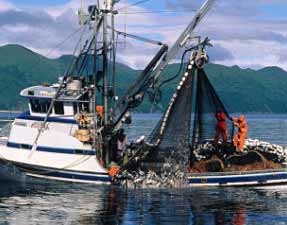Instructor Industry Overview
Choosing to become a ski or snowboard instructor is an exciting decision. Mountains are magical places to call your office. It’s an adventure teaching people how to ski and snowboard on fluffy white snow in the middle of nature. There is really no job that compares.
Teaching snow sports is a seasonal gig that attracts all sorts of ski bums – college kids, recent grads, outdoor lovers, retirees, and everyone in between. Ski and snowboard instruction is customer service on snow. Every lesson must be tailored to the client’s needs. Being able to read people helps to ensure that everyone has a great time – and a great time produces life long skiers and clients
How Much Do You Want To Work?
Ski resorts are busy places all winter long, but they truly bustle during the holiday seasons. It’s hard for resorts to employ enough ski and snowboard instructors during the busy times. This makes lots of opportunities for full-time, part-time, and holiday-helpers. They all get a free pass and get paid to instruct. What type of employment is best for you?
Full-Time – These career-focused instructors spend all winter living and working at the resort. They teach lessons 100+ days a season.
Part-Time – Part-time is ideal for a variety of reasons – rookies who need to improve their skills, locals who like to teach weekend programs for the pass, or ex-full timers who now work real jobs. Other part timers only ski with their private clients and work other jobs.
Holiday-Help – This is the perfect niche for college students on holiday breaks. It can be a great way to build a resume, make a good paycheck, and earn a free pass.
Certification
If you choose to spend more than one season working as a ski instructor, it’s important to work your way up the ski or snowboard instructor ladder. Earning certifications from Professional Ski Instructors of America (PSIA) or American Association of Snowboard Instructors (AASI) is the only way to make instructing into a career. These certifications make you a more fluid rider, a better teacher, and train your eye to watch for people’s movements.
PSIA is the organization for ski school instruction certification in the United States. Through its certification process, PSIA provides a measure of uniformity and consistency nationwide.
Need ski or snowboard instructor training or certification? Check out the program that EA Ski and Snowboard offers!
Related: PSIA-AASI Ski Tips Video
Within the U.S. there are nine regional divisions of PSIA. While each region has its own certification committee and designated examiners, the PSIA national office has made a concerted effort over the past several years to standardize the certification process.
Certification is helpful when applying for a ski instructor position, but it’s not required. Although, certification does make looking for a job easier. Most ski schools divvy up work based on certification levels and experience. The higher your cert, the more chance you’ll have to work and the more likely you’ll get a high end client. Certification makes you more employable and usually will get you a higher wage.
PSIA and AASI certify US instructors. Each country has unique certification processes overseen by the International Ski Instructor Association (ISIA).
— View Ski Resort Job Postings —
Instructor Wages
Instructing is one of the best paying gigs in the ski industry. Ski and snowboard instructors average about $12 per hour. Some veteran instructors make over $30 per hour.
The best way to make money is to establish a private clientele who book you regularly and tip well. It is rumored that at some of the brand name resorts, the best ski instructors make their hourly wage plus get tipped over $100 per day. Imagine that type of pay every day all season long. It certainly beats working in a cubicle.
The Rest of the Year
Instructing is a unique job because for most people it only lasts for the winter season while the ski resorts are operating. This temporary employment is the most frustrating thing about being a ski instructor, and is the reason why some qualified instructors travel to the Southern Hemisphere to ski in Argentina, Chile, New Zealand, and Australia to make instructing a respected, year round career.
Other instructors stay nestled in the mountains and spend the summers working in ski shops, trail maintenance crew, bike instructors, hiking guides, raft guides, and other exciting jobs in the recreation industry. The winter is why people move to the mountains, but some say the summers are why they stay.
Spending the winter season at your favorite ski area sharing your love for skiing and snowboarding is an unreal experience. It’s amazing how fast time flies when you do something you love. Now it’s time to learn more about what it’s like to be a ski instructor.


 Teach English in Asia
Teach English in Asia  Cruise Ship Jobs
Cruise Ship Jobs  Alaska Fishing Industry Jobs
Alaska Fishing Industry Jobs  Sharing Economy / Gig Economy
Sharing Economy / Gig Economy